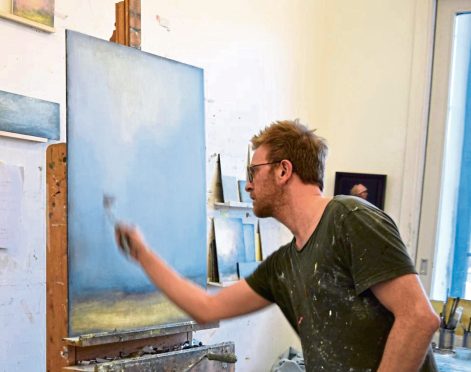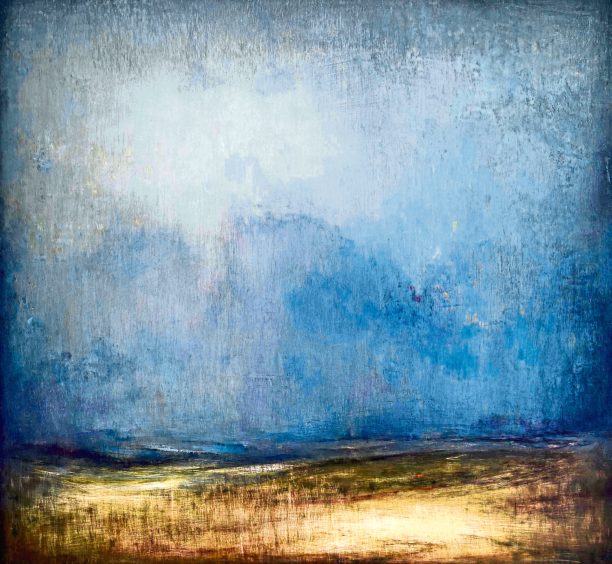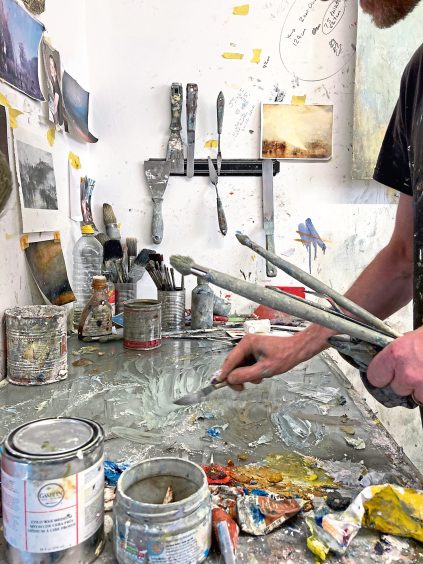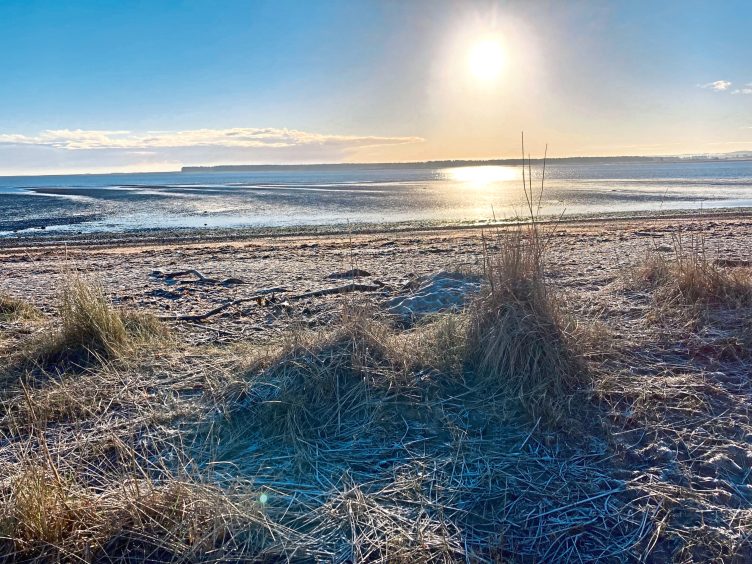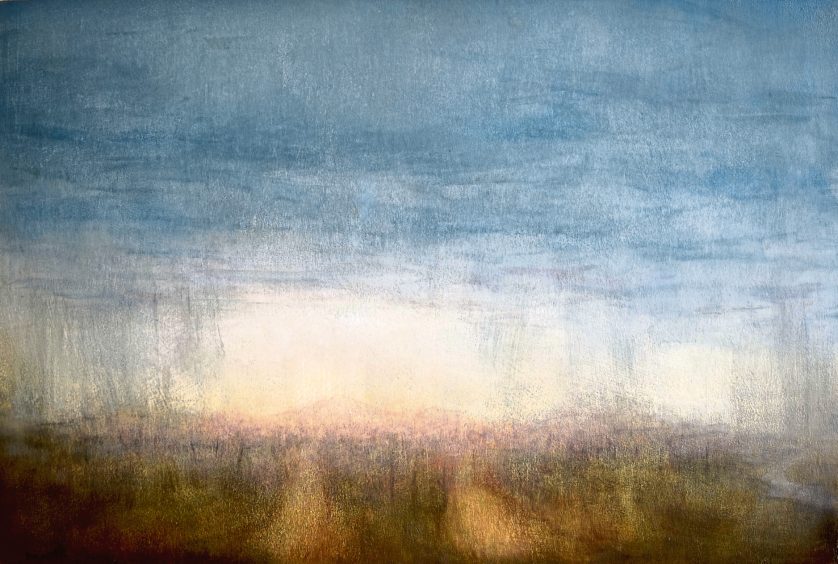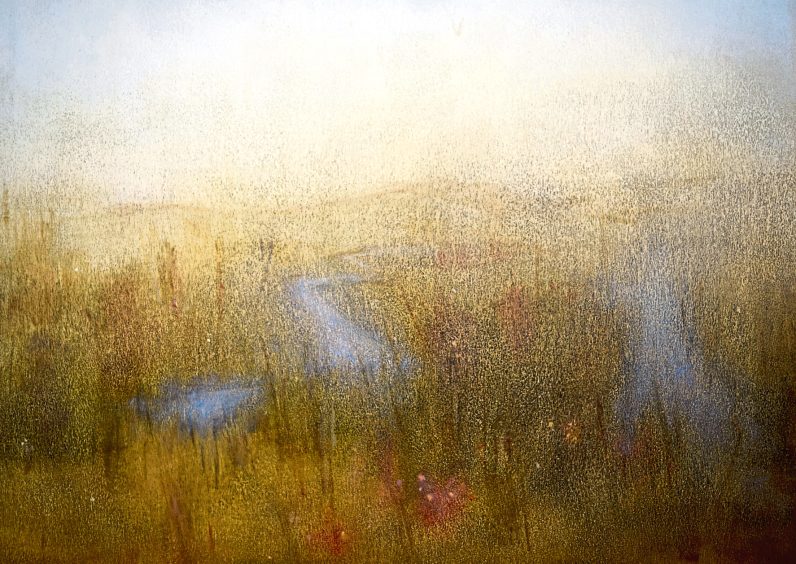There is something about an incredible ability to capture fleeting moments of beautiful light that sets true artists apart from the rest of us mere mortals. Robert Macmillan’s Light Half Hidden is a perfect example of a collection of paintings that do just that.
The Courier caught up with him as his paintings went up on the walls of the Fraser Gallery in St Andrews.
This new body of oil paintings by Robert gives the impression of images that have come easily to the artist’s board, belying the meticulous attention to detail and technical skill that have been invested in each of his works.
Robert, who was born in Glasgow and studied fine art at Dundee’s Duncan of Jordanstone College, now lives in Broughty Ferry with his wife Jill and their three children.
Friendly and unassuming, when we meet on a dreich Monday morning, his passion for his work comes to life when we sit down to chat over a coffee a few doors down from the gallery.
Growing up in Glasgow, 49-year-old Robert wasn’t from a particularly painterly background but says that his parents always encouraged his creativity. “As a kid I loved drawing, my mum and dad weren’t artistic, although supposedly way back there is a connection with Raeburn the painter,” he says.
Art always encouraged
“My mum loved paintings and we lived really close to Kelvingrove Art Gallery, so we spent a lot of time there. My dad was from Arisaig on the West Coast – he taught himself to play the violin and I guess saw my love for art and he wanted to encourage me as a painter.”
Robert spent time working on his uncle’s farm on Arisaig most summers and admits that he loved it so much that he was tempted to make a more permanent move to the area.
School wasn’t particularly easy for Robert, who has been diagnosed with attention deficit hyperactivity disorder (ADHD) in recent years. Which, he says, makes a lot of sense when he looks back at his experience in education: “I struggled a lot in primary school, teachers said ‘his head is just full of nonsense’,” he says.
“I lacked concentration and struggled to take information in.”
A coping mechanism
Moving to secondary education wasn’t much easier but art helped him to cope. “The high school I went to was a bit rough and so it was tough for me being impulsive and very black and white about things,” he recalls.
“I had one art teacher in particular – he was from one of the rougher areas in Glasgow – and he helped me to get my portfolio together. I was one of the people who was accepted to art college on the strength of their portfolio.”
Having graduated, Robert was awarded the RSA John Kinross Travelling Scholarship, which allowed him to travel to Florence to immerse himself in all that city has to offer.
“You could stay in Florence for as long as you wanted and different friends came over and we travelled to Venice and Sienna. The quality of light is incredible there,” he says.
That experience transformed his work: “All I used to do was figures inspired by Rembrandt and suddenly I came back from Florence painting in lemon yellow and pinks!” he laughs.
He still searches for that intense quality of light. “I would love to visit St Ives in Cornwall,” he says. For Light Half Hidden, though, he didn’t have to stray far from home. The scenes are inspired by his walks in and around north-east Fife and the Angus coastline.
Coastal scenes appeal to Robert due to: “the importance of being able to see as much of the sky and clouds as possible as they have a major impact on my work.”
He cites locations such as Lunan Bay and the Arbroath cliffs as favourite spots. “We live in Broughty Ferry, so Monifeith, the East Sands, West Sands at St Andrews and the Eden Estuary and Tentsmuir forest are all favourites.”
He will head out with the family in tow or simply on his own, citing the importance of getting outside for his mental health as well as artistic inspiration.
Taking the images home
He drinks in the scenery to bring home in his head. “I take lots of photographs but I rarely reference them,” he explains. “I wouldn’t even draw or paint outside.
“I come home, sketch and do little drawings I guess I’m forming a composition – there’s a system I follow, a rhythm. There are a couple of different methods I use which are heavily influenced by Jimmy Howie.”
Dundee artist James Howie (1931-2011) was a formative influence on Robert’s work. He first met Jimmy when a friend recommended that he go to an exhibition of his paintings.
He recalls seeing Jimmy and being immediately drawn to him. “There can be a certain level of pretentiousness in the art world,” says Robert, “but he was in a ragged old jumper and a pair of trackie bottoms. I thought he was great!
“I was invited to his studio. He made his own paints, painted very minimal landscapes, which again were to do with light.
“There was such a poetic quality about his work, his desire and passion to understand paint and how to use it. He would build his paintings up in these glazes and I can see that gradually having its effect on me.”
WASPS Dundee
When Robert moved into a studio in WASPS Dundee, he found himself continually inspired by Jimmy’s painting.
Robert’s work also echoes the American Tonalist George Innes (1825-1894) and especially James McNeill Whistler (1834-1903).
“Whistler used to say, ‘what’s forgotten is as important as what is remembered’,” explains Robert. “He used to stand and look at a scene, turn round and then he would name certain things to test his memory. He would go straight back to the studio and paint it.
“If I try to use photographs for my landscape painting it doesn’t work. I need to play with the scene – the colour or the tone, the tones are very close together.
“This process is very deliberate as I have discovered I am looking for something else.
“It’s definitely not a copy of nature, but rather through simplifying the composition and almost stripping back the landscape I am seeking to capture something more poetic.”
All of the works in the exhibition are oil paintings on board – Robert’s materials of choice for many years now. “It was Lucien Freud who said ‘use paint as if it is flesh’, you can create any kind of thing with it – mimic material or flesh. The way it dries means you can do things with oil paint that you just can’t do with other paint.
“The effects that can be won with it are limitless and yet at the same time it demands patience, understanding and at times great disappointment!”
Using glazes to inject light
Robert explains that he uses the surface of his boards to inject light into his paintings: “If you glaze a painting it’s like a wash of colour and you have light bouncing off that.
“I haven’t worked on canvas because a lot of my paintings are sanded, the texture acts in a similar way to canvas and it’s got this broken effect.
“I’m trying to create the whole painting to be unified, not suddenly finding a bit of thick paint or a brush mark. You have to get the surface just right and only then can you paint on it.”
Over the years, Robert’s work has embraced many different aspects of the great outdoors. “There was a while back when I was obsessed by seagulls,” he says, smiling at the idea. He isn’t a fan of the birds up close but loves the way they move in the air, “and there are times when they come into the paintings.”
Low level cloud and the network of beach paths at West Sands or Tentsmuir have also been recurring themes. “Going out on a walk I might suddenly be taken with the paths and just keep rolling with that, so the paintings are all connected in that way.”
The similarity of subject matter does raise the concern that the work becomes too repetitive but Robert puts this down to the fact that each time he visits a location it can look totally different with changing weather and light and also that he always has that nagging sense that he can “do better next time”.
“It’s almost like you are taking notes from a song and placing them in a slightly different order and you never tire of using them,” he says.
Light Half Hidden ranges from smaller works such as As The Sails Unfurl, East Sands, St Andrews (14 x 14cm) to large scale paintings such as The Gathering Place, which measures 91 x 122cm.
The exhibition runs at the Fraser Gallery, St Andrews until October 21.
